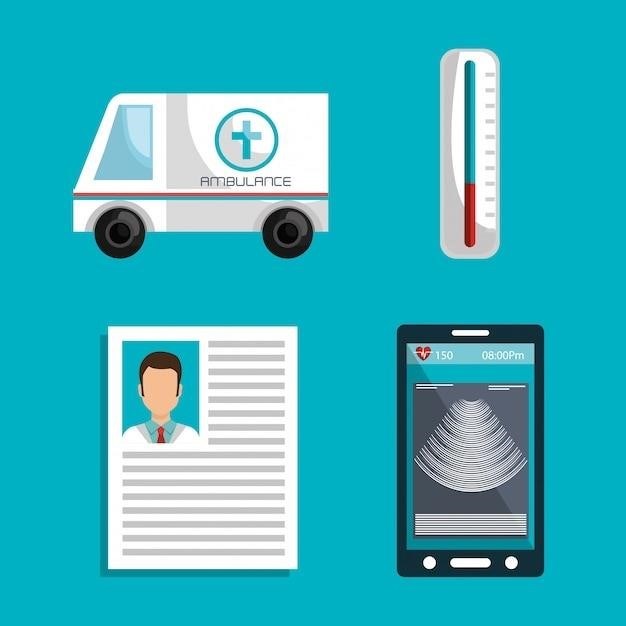8915-f instructions
Form 8915-F Instructions: A Comprehensive Guide
These instructions provide detailed information to assist you in completing Form 8915-F. Refer to Appendix A to determine which lines on Form 8915-F should be completed for 2020 and later disasters. This guide aids in accurately reporting qualified disaster retirement plan distributions and repayments.
What is Form 8915-F?
Form 8915-F, officially titled “Qualified Disaster Retirement Plan Distributions and Repayments,” is an IRS form used to report distributions and repayments related to qualified disasters. Specifically, it addresses situations where individuals have taken distributions from qualified retirement plans due to specific disasters declared by the President under the Stafford Act. It is also used if you were adversely impacted by the coronavirus or affected by a qualified 2020 or later disaster.
The form replaced Form 8915-E beginning in 2021, addressing qualified 2020 disasters, as well as qualified 2021 and later disasters. This form is crucial for calculating and reporting the taxable amount of these distributions, as well as tracking any repayments made to the retirement plan. Taxpayers use it to report distributions from retirement plans stemming from events like the coronavirus pandemic and other qualified disasters occurring after 2020. Completing and submitting Form 8915-F ensures compliance with IRS regulations regarding disaster-related retirement distributions.
Purpose of Form 8915-F
The primary purpose of Form 8915-F is to report qualified disaster retirement plan distributions and any subsequent repayments. This ensures accurate calculation of taxable income related to these distributions. It facilitates the reporting of retirement plan distributions taken due to specific disasters declared by the President under the Stafford Act, or those related to the coronavirus pandemic and other qualified post-2020 disasters.
Form 8915-F allows for the spreading of income from these distributions over three years, potentially lessening the tax burden in a single year. It also serves to track any repayments made to the retirement plan, which can offset the amount of income subject to tax. By using this form, taxpayers can adhere to IRS guidelines for disaster-related distributions, ensuring they properly account for any income or repayments associated with these events. It provides a structured way to document and report these transactions.
Who Should File Form 8915-F?
Individuals who took distributions from qualified retirement plans due to specific disasters declared by the President under the Stafford Act, or those related to the coronavirus pandemic and other qualified post-2020 disasters, must file Form 8915-F. This includes anyone who received distributions from eligible retirement plans like a 401(k), a qualified pension, profit-sharing, or stock bonus plan, a qualified annuity plan, or a tax-sheltered annuity contract, and who have included such distributions in their gross income.
If you were adversely impacted by a qualified disaster and withdrew funds from your retirement account, you are likely required to complete this form. This applies to distributions taken in 2021 and later years, as Form 8915-F replaces Form 8915-E for these tax years. The form ensures proper reporting and potential tax benefits related to these disaster-related distributions.
Eligible Disasters for Form 8915-F
Form 8915-F is used to report distributions related to qualified disasters. These disasters must be declared by the President under the Stafford Act. The form also covers distributions related to the coronavirus pandemic, specifically those taken in 2020 and subsequent years. For a disaster to be eligible, it must be formally recognized and designated as a qualified disaster area by the federal government.
This designation allows individuals affected by the disaster to access retirement funds under special provisions, such as relaxed withdrawal penalties and the ability to spread the income tax liability over three years. The specific disasters covered by Form 8915-F will vary from year to year, depending on which events meet the criteria for a qualified disaster declaration. Always consult official IRS resources for the most up-to-date list of eligible disasters.
Qualified Disaster Distributions
Qualified disaster distributions are withdrawals from eligible retirement plans made by individuals impacted by a qualified disaster. These distributions receive special tax treatment, potentially waiving early withdrawal penalties. To qualify, the distribution must be made from an eligible retirement plan due to the disaster. The maximum amount treated as a qualified disaster distribution for each disaster is $22,000.
Distributions exceeding this limit may not qualify for the special tax benefits. These distributions can be included in income over three years, or the taxpayer can elect to include the entire amount in the year of distribution. It’s crucial to accurately report these distributions on Form 8915-F to claim the associated tax relief. Always consult IRS guidance and a tax professional for personalized advice.
Retirement Plans Eligible for Disaster Distributions
Several types of retirement plans qualify for disaster distributions, offering individuals affected by disasters access to their savings. Eligible plans include qualified pension, profit-sharing, and stock bonus plans, such as 401(k) plans. Qualified annuity plans and tax-sheltered annuity contracts are also included. These plans allow for withdrawals under specific disaster-related circumstances, as outlined by the IRS.
Individual Retirement Accounts (IRAs), both traditional and Roth, are also considered eligible retirement plans for disaster distributions. The specific rules and limitations for these distributions are detailed in IRS publications and instructions for Form 8915-F. It’s important to note that not all withdrawals from these plans automatically qualify as qualified disaster distributions. The distribution must meet the criteria set forth by the IRS, related to a declared disaster.
Form 8915-F and Form 8915-E
Form 8915-F replaced Form 8915-E beginning in 2021. Form 8915-E was utilized for reporting coronavirus-related distributions and other qualified 2020 disaster distributions. If you previously filed Form 8915-E, you will now use Form 8915-F for reporting qualified disaster distributions for 2021 and later years.
The transition to Form 8915-F ensures a standardized approach to reporting qualified disaster distributions across different tax years. While Form 8915-E is no longer in use, it’s crucial to understand its relevance if you amended your 2020 return.
The IRS provides detailed instructions to guide taxpayers through the proper usage of Form 8915-F, particularly for those who have prior experience with Form 8915-E. Pay close attention to the specific requirements and guidelines.
Filing Form 8915-F
To submit Form 8915-F, attach it to your Form 1040, 1040-SR, or 1040-NR for the corresponding tax year. Ensure you are using the correct form for the tax year indicated in item A on page 1. File the forms together by the regular tax filing deadline, or by the extended deadline if you’ve filed for an extension.
When filing, include any completed worksheets with Form 8915-F, starting with the 2022 tax year. These worksheets provide detailed calculations supporting the amounts reported on the form. Ensure all information is accurate and consistent across forms.
Before you begin, verify that you are using Form 8915-F for qualified 2020 disasters, as well as qualified 2021 and later disasters, and for each year of distributions. This ensures that you are reporting the distributions correctly and avoid any potential issues with the IRS;
Deadline for Filing Form 8915-F
The deadline for filing Form 8915-F coincides with the standard tax filing deadline for the year in which the qualified disaster distribution was received. This typically falls on April 15th of the following year, unless an extension is filed. It’s crucial to remember this date to avoid potential penalties or interest charges.
If you have filed for an extension to submit your Form 1040, 1040-SR, or 1040-NR, the deadline for filing Form 8915-F is automatically extended as well. Ensure that you attach Form 8915-F to your tax return when you eventually file it, making sure to meet the extended deadline.
Keep in mind that even with an extension, interest may still accrue on any unpaid tax liabilities. Therefore, it’s advisable to estimate your tax liability and make payments to minimize potential interest charges. Always double-check the specific deadlines for the relevant tax year, as they may be subject to change.
Amending Form 8915-F
If you discover errors or need to make changes to a Form 8915-F you’ve already filed, you’ll need to amend it. To do so, you’ll generally file an amended tax return, typically using Form 1040-X, Amended U.S. Individual Income Tax Return. Along with Form 1040-X, you’ll submit a corrected Form 8915-F reflecting the accurate information.
When amending, be sure to include a detailed explanation of the changes you’re making and the reasons for the amendment on Form 1040-X. This helps the IRS understand the corrections and process your amended return more efficiently. It’s also wise to retain copies of both the original and amended forms, along with any supporting documentation, for your records.
Remember that amending a return may impact other aspects of your tax situation, so it’s essential to carefully review all related forms and schedules. Seeking professional tax advice can be beneficial when navigating the complexities of amending Form 8915-F and your overall tax return.
Worksheets for Form 8915-F
Form 8915-F often requires the use of worksheets to calculate certain figures related to qualified disaster retirement plan distributions and repayments. These worksheets help you determine the taxable amount of distributions, track repayments, and calculate any adjustments needed.
Specifically, Worksheet 1B, column (a) requires you to enter the available distributions for the year. In Worksheet 1B, column (X), begin by recording the amounts you intend to claim as qualified disaster distributions for each listed disaster.
These worksheets provide a structured approach to ensure accurate reporting and compliance with IRS regulations. Beginning with the 2022 tax year, you should attach completed worksheets to your Form 8915-F when filing your return. The IRS instructions for Form 8915-F provide detailed guidance on completing these worksheets, including specific line references and calculation methods. Utilizing these worksheets correctly is crucial for accurate tax reporting and avoiding potential issues with the IRS.
Qualified Disaster Recovery Distributions
Qualified disaster recovery distributions are a specific type of distribution from eligible retirement plans, designed to aid individuals affected by qualified disasters. These distributions are subject to special tax rules, often allowing for a more favorable treatment compared to regular retirement distributions. Form 8915-F is used to report these distributions and any subsequent repayments made to the retirement account.
To qualify as a disaster recovery distribution, the distribution must meet certain criteria outlined by the IRS. Typically, the disaster must be declared by the President under the Stafford Act, and the individual must have suffered adverse financial consequences as a result of the disaster. The distribution must also be made from an eligible retirement plan, such as a 401(k), IRA, or other qualified retirement account.
One key benefit of qualified disaster recovery distributions is the potential for spreading the income tax liability over three years. Additionally, individuals may be able to recontribute the distributed funds back into their retirement account within a specified period, effectively undoing the distribution for tax purposes. Form 8915-F provides the framework for reporting these distributions and any related repayments.




